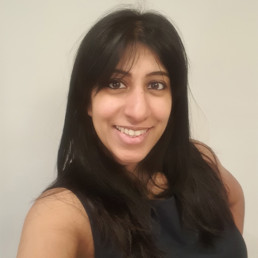
Written by Bhamika Bhudia
English teacher and lead teacher in a mixed comprehensive secondary school in North-West London. She tweets as MissMika_Eng
Diversity is a bit of a buzzword lately and a loaded one. Everywhere you look, it is in company policies, featured in plots of television shows and floating around our classrooms and curricula. However, despite its crucial need for focus and acknowledgement, the form we see of it is connoted with guilt, shaming and ultra-wokeness: the next big thing everyone needs to be talking about and be seen giving a nod to.
While terms like “diversity-hire” and “ticking boxes” are thrown around, what often goes amiss is the importance of representation and in more than just a tokenistic manner. Penguin recently published findings showing that, “Less than 1% of GCSE students in England study a book by a writer of colour, and only 7% study a book by a woman. This despite 34.4% of school age children identifying as Black, Asian and minority ethic.”
So many of our students do not see or hear themselves in the stories we tell them. So when “diversifying the curriculum” may be portrayed as the next big edu-fad, the damage of not doing this can last lifetimes. And with much of the media painting stereotypical and negative portrayals of anyone who is not white English, it is all the more damaging.
I am an Indian woman in my thirties; I spent my teens seeing most of the women from my genepool as submissive, perfectly poised opportunities for an arranged marriage plotline or a submissive daughter who just wanted some autonomy over her own life or career, should she have the audacity to want one. Who I am could not be further from this stereotype and having these very limited and hazy reflections of myself as a British-Indian woman, led me to experience conflict with a culture that I am in actual fact, incredibly proud of. But as much as this affected my youth and shaping of my identity, I can at least say that it has evolved. Archie Panjabi has gone from playing the daughter oppressed by her ethnic brand of patriarchy in the noughties to a no-nonsense, lawyer or motorcycle-riding, pathologist; Priyanka Chopra from a Miss-World-winning, exotic Bollywood beauty to a conflicted, sexually-empowered, complicated FBI agent; and of course, we have Malala and everything that she is and has done.
While I’m not for a second saying all of the issues with the representation of the Asian females have been fixed, I am acknowledging that progress has been made as it has with many other minorities and women in general. However, this is not the case across the board.
A classic example is the South-Asian male. Everywhere we see him, the Asian man is an awkward, socially inept, sexually-repressed individual whose role is no more than to drive a taxi, serve behind a shop counter or be the butt of jokes at a “funny accent” or his inability to communicate with women! The criminalisation of the black man still stands prominent over any suave and sophisticated depictions we have of him – and please can we take a real look at the dangerous and discriminatory portrayal of muslims on our silver screens?!
These one-dimensional and offensive reflections of the very students we teach will take heed on how they see themselves. They are essentially telling whole demographics that they are sexually undesirable, expected to show no confidence and be laughed at; or mistrusted, feared and hated. And they will all lead to one of three things: abandonment or dilution of their own culture; appropriation of another culture or the complete marginalization of groups of people from the British values we are told to uphold professionally, as part of our teacher standards!
How we see ourselves in the world around us is important so while western society and the wider media may be failing, we as teachers have the opportunities to tell our kids that they are not invisible, they are real and they are important. So the next time you feel the term “diversification of the curriculum” is being treated as the next temporary fixture as so many things in education are, think about the stories that may be told about the kids in your classroom and the power they can have. We have the opportunity to change the narrative and give our kids a voice that truly resonates with them – an opportunity that should not be missed!

